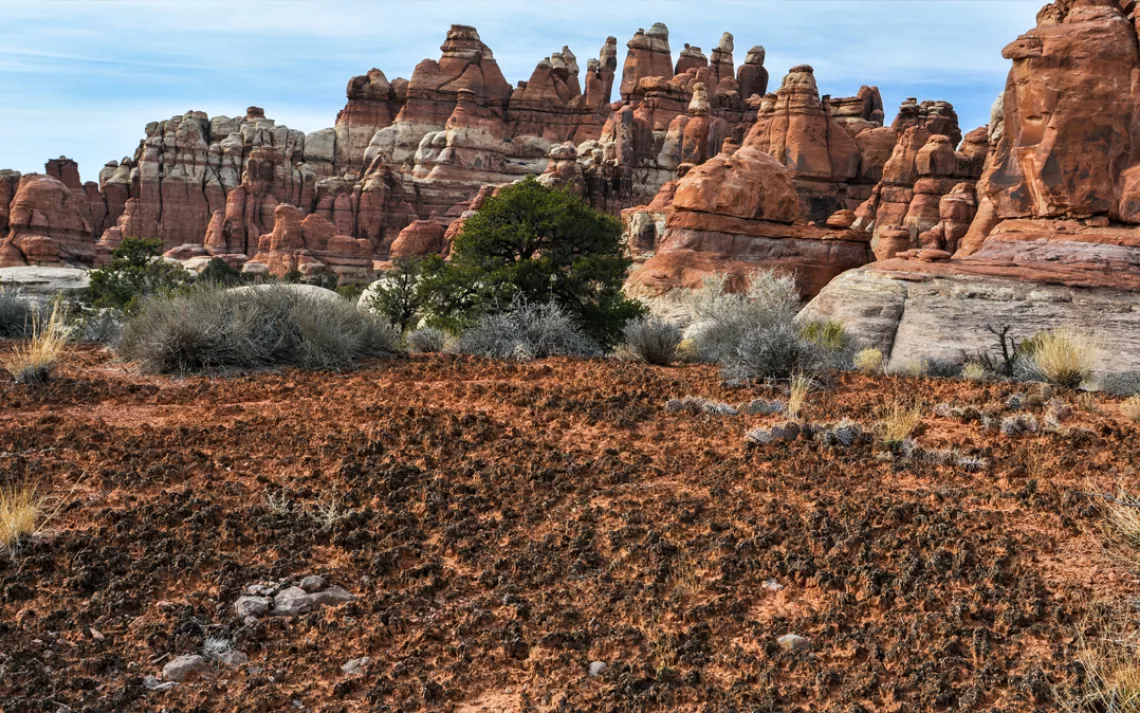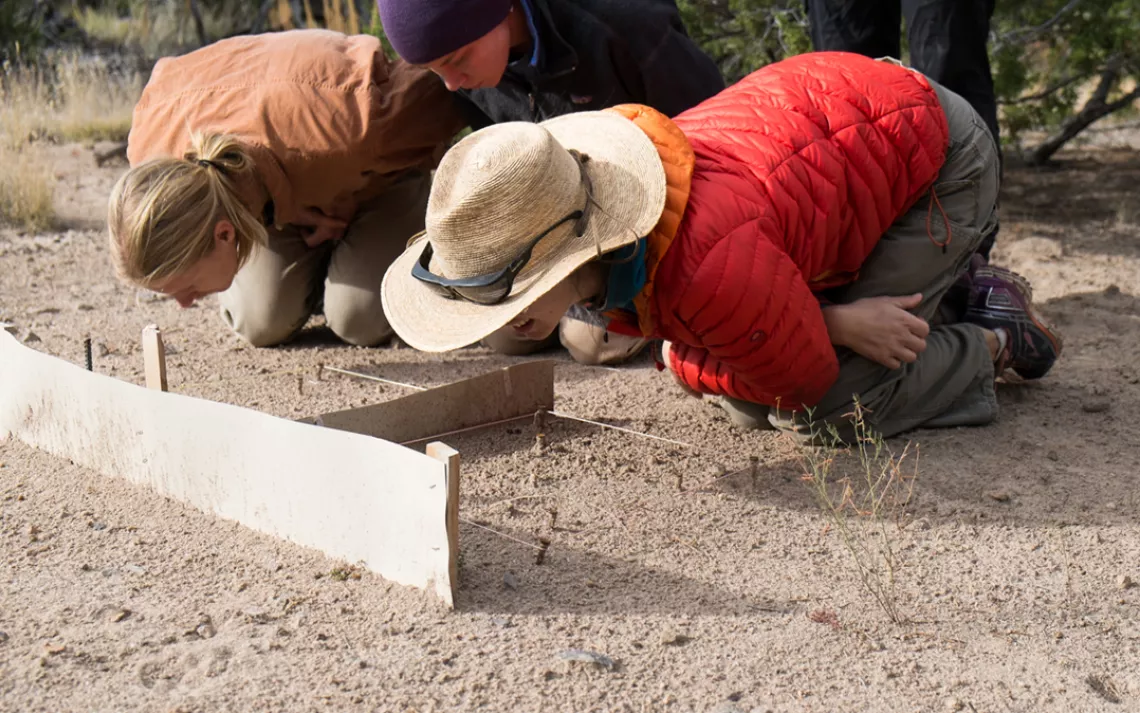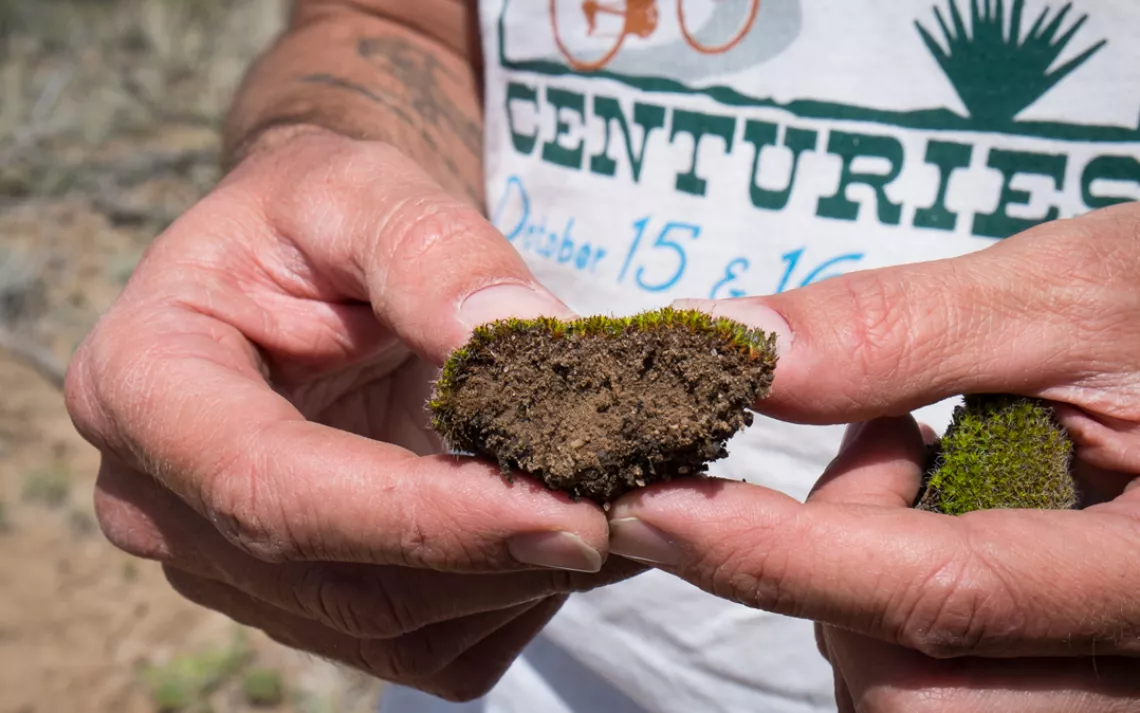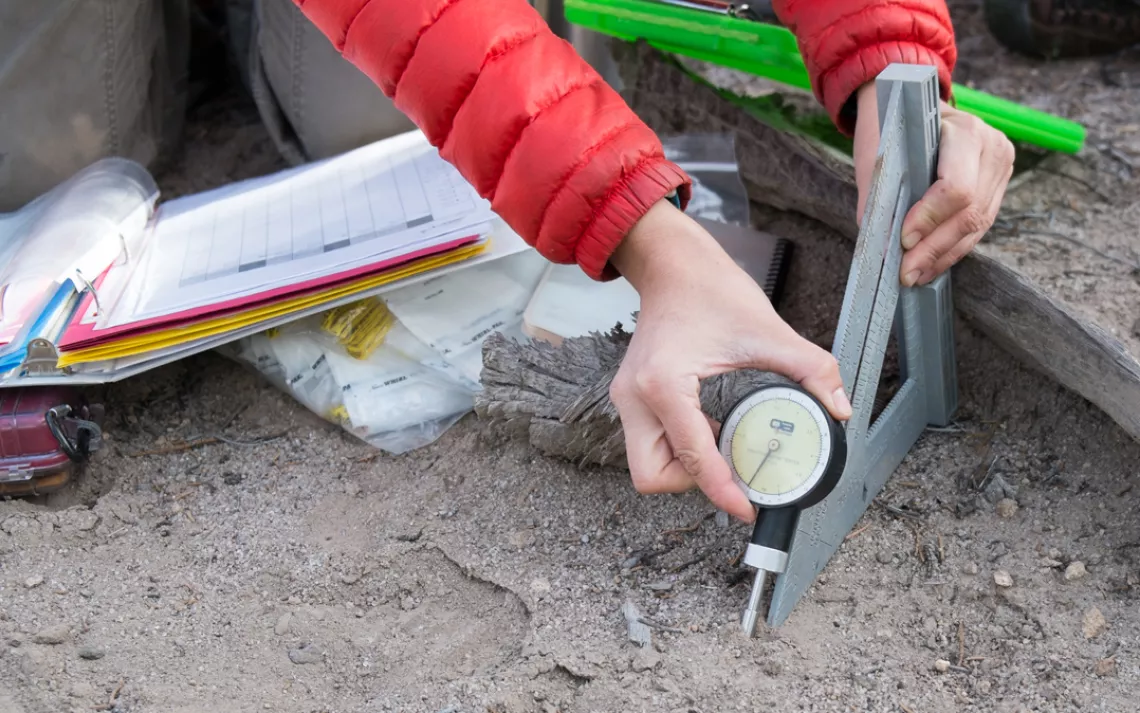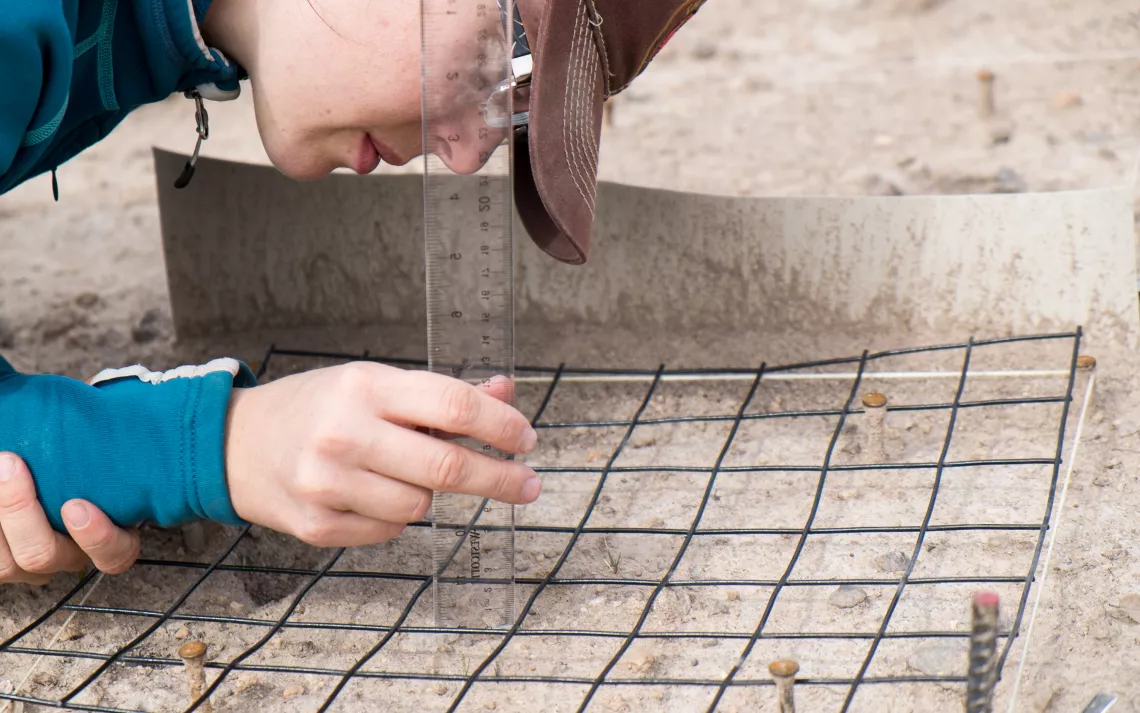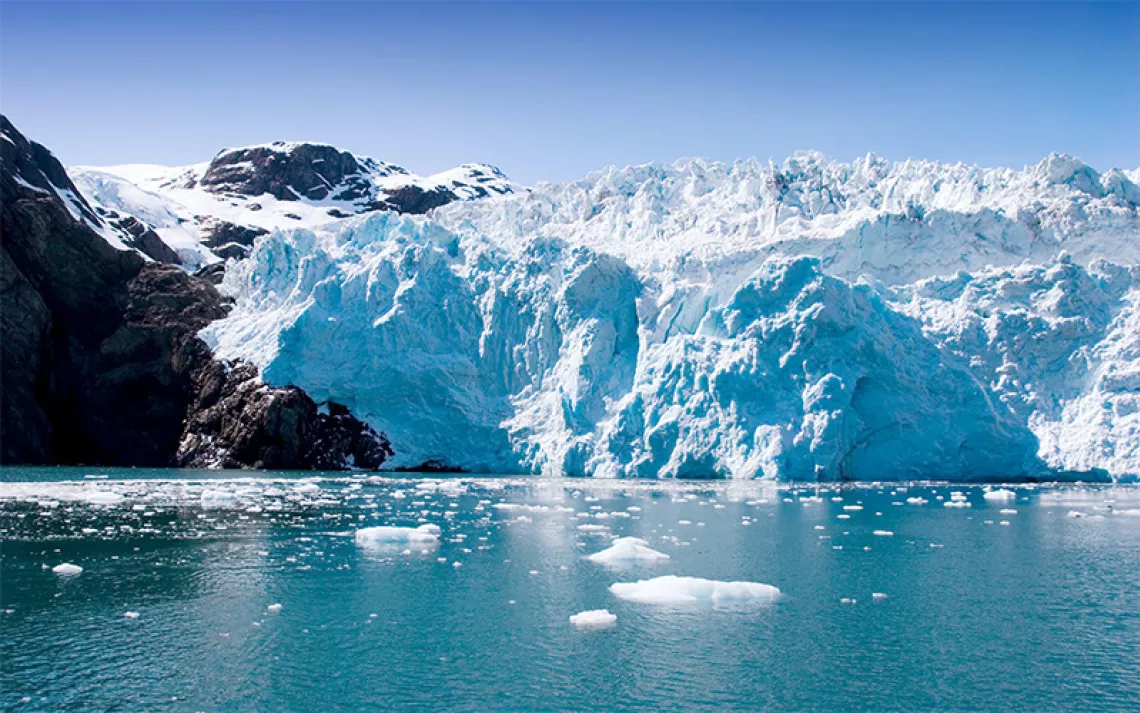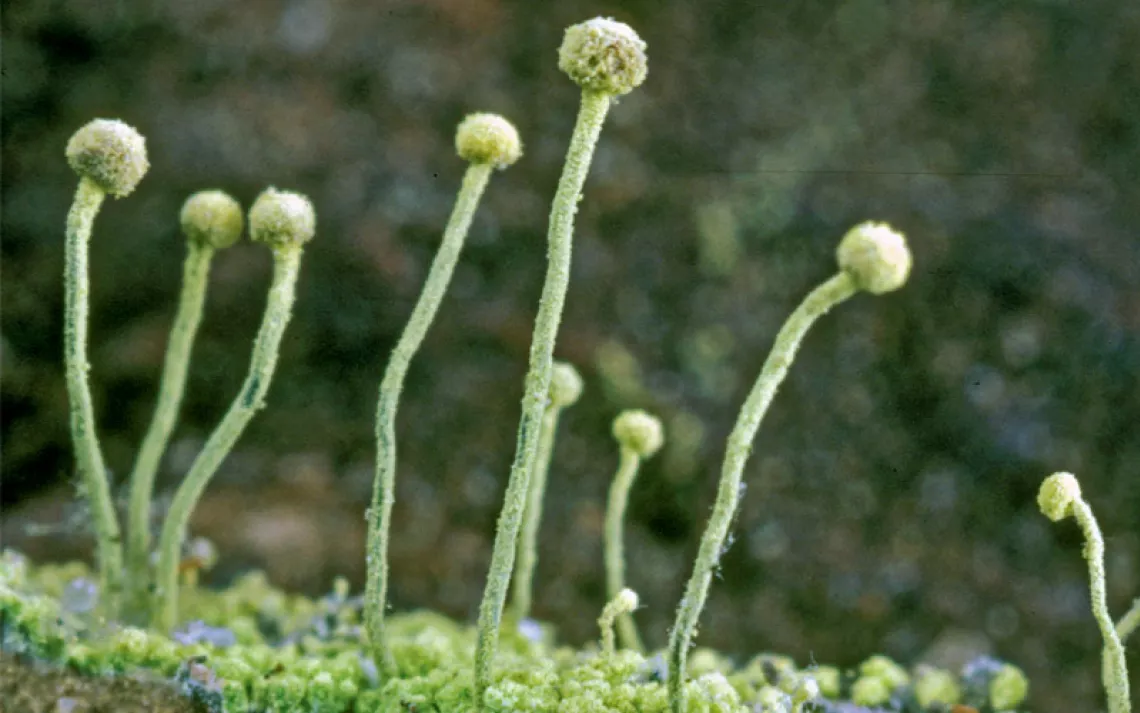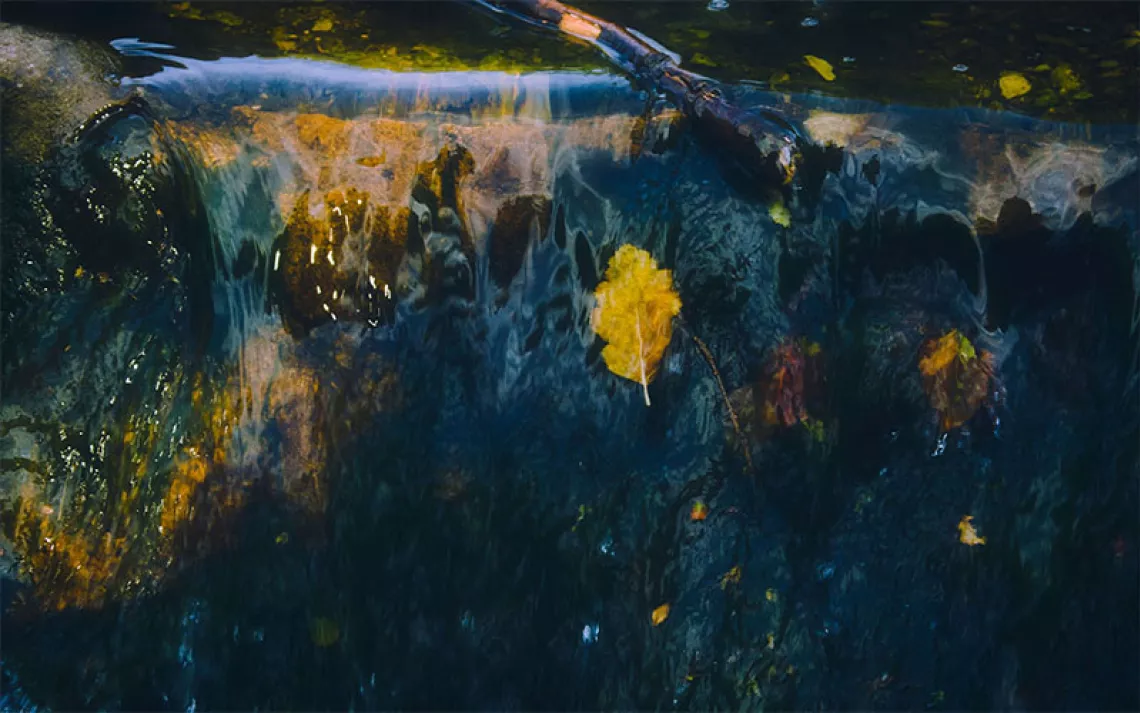Restoring Arid Lands
A dark matte coating covers the sandy, red soil around Moab, Utah. Visually, it takes a backseat to the region’s stunning rock formations, but this living crust is integral to a healthy environment. Moab is one of the few places where terms like “biocrust” and “cryptobiotic soils” appear in the everyday vernacular, but in arid lands around the world, varied communities of tiny lichens, mosses, and cyanobacteria play critical but often-overlooked roles. They keep soil firmly in place, fix nitrogen from the air, and help rainwater seep into the ground. If they are disturbed, they can take decades—even centuries in some places—to fully recover. Now, new techniques for growing biocrusts in a lab may enable land managers to speed up the process and lop years off that recovery.
In a humid greenhouse in Flagstaff, Arizona, tables with grids of plastic food containers and larger tubs are filled with sandy soil. A series of hoses pump water into reservoirs, where the soil wicks the moisture up to the layer of biocrusts growing on top. Matthew Bowker, an assistant professor in Northern Arizona University’s School of Forestry, grins as he explains the system, which he calls the “bryotron.” It’s named for the mosses—or bryophytes—that are growing in it. His lab is one of a handful around the world that has cultivated a healthy crop of biocrusts, not over years, but in a matter of months. Given ample nutrition and water, crust communities flourish. By gathering samples from degraded sites to grow in a greenhouse on a greater scale, researchers are hoping that experiments like these will lead to new possibilities for both small- and large-scale restoration.
Biocrusts are found on many of the world’s drylands, which make up roughly 40 percent of our planet’s landmass. Cyanobacteria form long, sticky filaments that wind through the top few centimeters of soil, binding sandy particles together and rooting them to the ground. With mosses and lichens, they also increase water absorption, are integral to nutrient cycling, and may pave the way for larger vascular plants like grasses, wildflowers, and shrubs to become established. “Biological crusts are one of the pillars holding up semiarid ecosystems,” says Bowker. “Restoring them can be just as important as restoring vascular plants.” When they are damaged, ecosystems lose not only these important services, but also soil nutrients through erosion and dust. While soil disturbance declined following the Taylor Grazing Act of 1934, activities like large-scale energy development and military exercises continue to impact soil stability in the West.
“Don’t bust the crust” is a common admonition in Moab, Utah, encouraging hikers and mountain bikers to keep to the trails. The pressure of a boot or tire breaks the long cyanobacterial filaments into short ones, making the crusts vulnerable to wind and water erosion. The spinning motion of a tire can also cover living crusts with a layer of sand—and only a few species can survive without sunlight.
It’s not only local ecosystems that suffer; ecosystems far beyond the desert are also impacted by the loss of biocrust loss. Without physical and biological crusts or plants to hold soil in place, wind stirs up dust and can carry it for miles. Following the surge in grazing and agriculture on the Great Basin and the Colorado Plateau in the mid-1800s, dust deposits in western alpine lakes increased significantly, according to a 2008 study published in Nature.
When dust reaches those alpine environments in the winter and settles on snow, it speeds up snowmelt, which has major implications for cities that rely on rivers like the Colorado for their drinking supply. Dust exacerbates conditions like asthma and can carry soil-borne pathogens such as valley fever. And, dust can affect communities like Moab, whose tourism-based economies depend on good visibility to showcase their impressive landscapes.
When restoring biocrust communities in order to alleviate these problems, land managers currently have few options. They can cordon off the affected area to let it recover on its own, or they can harvest crusts from healthy sites to crumble and spread over the damaged site, which effectively seeds the soil and spurs on new growth.
Using established crusts for restoration has a good track record, says Sasha Reed, a research ecologist with the U.S. Geological Survey in Moab, but it’s only feasible on a small scale, and only works if there’s a “sacrifice area” like land that is already slated for development. Reed, who won a Presidential Early Career Award for Scientists and Engineers in 2011 for her work in biogeochemistry and ecosystem ecology, says the ability to cultivate biocrusts “is a game changer.” The question is will these lab-grown crusts be able to survive the harsh realities of the desert after their lives of plenty in the greenhouse?
To find out, researchers from the University of Colorado in Boulder, Arizona State University, the USGS, and Bowker’s lab began several field tests last summer. They scattered dried lab-grown biocrusts over test sites in Utah and New Mexico and are looking at what conditions best allow these crusts to grow. It's too early to say for certain just how effective this technique will be for restoration, but the researchers share a palpable excitement for the possibilities.
On a hot summer morning, Reed, Bowker, and a team of researchers climbed a steep trail to a mesa in Bandelier National Monument, one of the planned test sites. Decades of tree die-offs and fires have left the archaeological treasures at Bandelier susceptible to being covered with dust or lost to erosion, and managers think that restoring the area’s crusts could help. As the group hiked, Bowker paused to examine a healthy patch of dark cyanobacteria, pulling up a small sample for a closer look at the pale, stringy threads that wove through the topsoil. A little farther down the path, a clump of mosses just centimeters high joined the mix. But at the edge of the mesa, where the conditions seemed prime for crust growth, there was bare sand. No one was sure why the crusts weren’t there, but with Bowker’s greenhouse-grown crust, they may be able to kick-start new growth on the mesa.
“There just hasn’t been that much hope until these projects,” says Reed. Crouching over a dusty test plot alongside lab techs and graduate students, Reed worked a hollow probe into the soil to collect a sample. When she returns next year, she hopes to find these plots teeming with life.
 The Magazine of The Sierra Club
The Magazine of The Sierra Club
